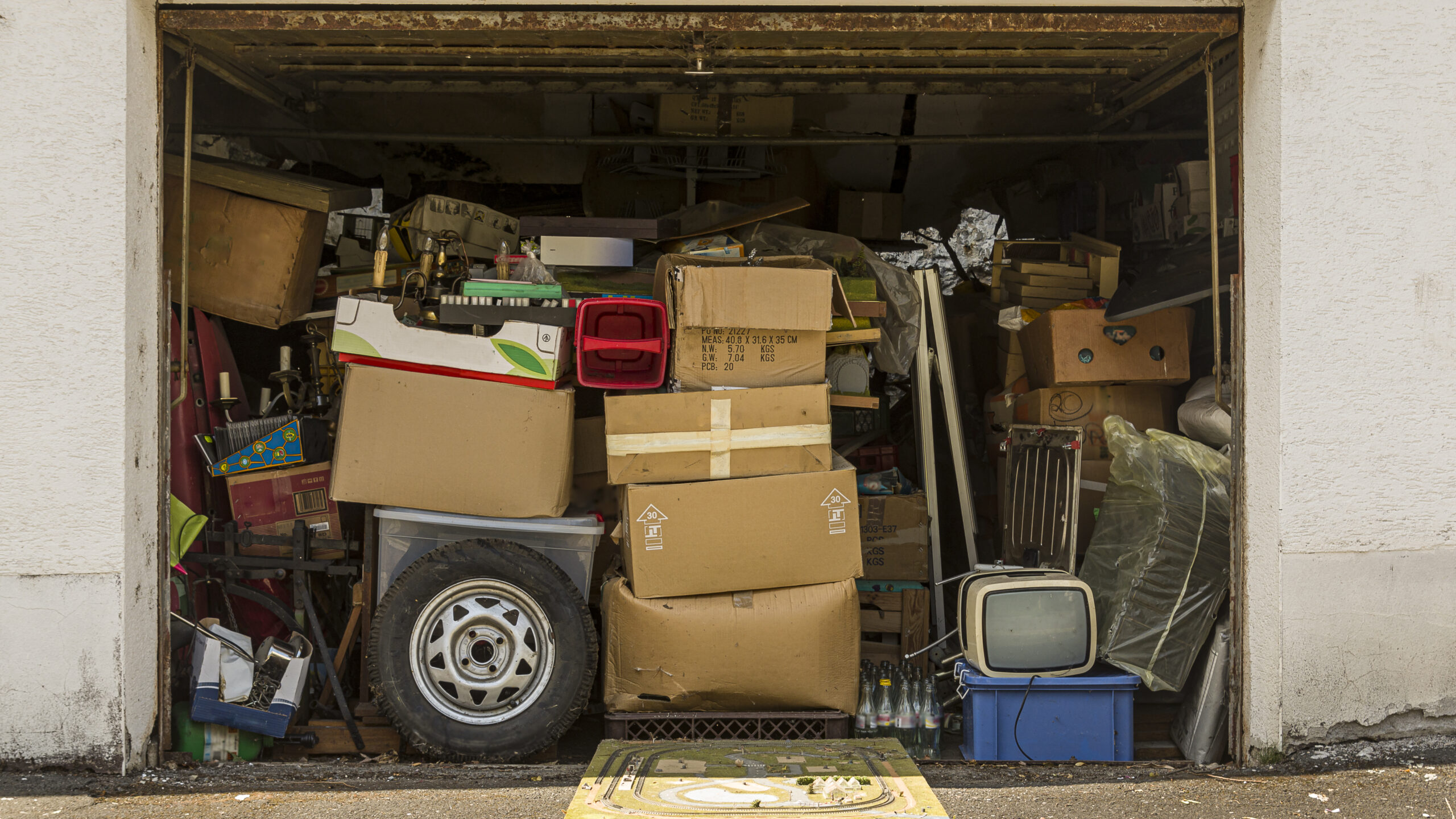I don’t have a driver’s license, so I don’t have to worry about that! :-)
If you’re work commuting with an EV and charging at home. What’s the hit to your electric bill?
Because that’s one of a few bottlenecks. $10 every few days for some gas is a lot easier on people than a blanket X hundreds of dollars higher light bill.
Being poor is expensive.
You’re right, being poor is expensive, but that doesn’t really apply to charging a vehicle.
The term “being poor is expensive” is generally applied to situations where you don’t have the money to pay for something upfront (a quality product, bulk purchases, preventative maintenance, preventative healthcare, down payment on a house) so you have to spend smaller amounts of money repeatedly and/or have a large unavoidable cost as a result (multiple cheap products that wear out, multiple small purchases with a higher per unit price, a blown engine, a root canal, rent), which can cost a lot more over time.
The electric bill is post-paid, not up front. Not being able to set aside the “$10 every few days” to pay the higher bill at the end of the month with money left over is just poor money management.
That being said, the higher purchase cost of electric vehicles preventing poor people from taking advantage of lower operating costs that would more than offset the higher purchase price after some number of years is an example of it being expensive to be poor.
That’s irrelevant because as far as I know you don’t actually have to have the car in the garage to be able to charge it you can put the charger on the outside if you want.
Also I don’t know how it is in America but my garage is literally too small for the car, I can just about get it in there but then I’m stuck because I can’t open the door far enough to get out.
This guy knows how to do it.
Many Americans have huge garages, some with room to park 2 or even 3 vehicles with plenty of space to walk around them. But even single garages are large enough to park cars.
I’ve seen in newer slapped together constructions where yes, wide enough for two cars but they skimped on depth and the average sedan or larger won’t actually fit.
Cars are much wider now than they used to be. Garages that were built more than 50 years ago likely are thinner.
My grandparents house built just after ww2 had, what was for a long time, a standard two car garage. Enough room for two land yachts from the 70s, lawn care implements and various other stuff and you could still open the car doors all the way and walk around. My parents’ house built in the 70s was the same. It’s more recent construction in built up areas where they are shrinking. They’ve been getting smaller as developers try to cram more liveable sqft on smaller amounts of land.
Couldn’t be that most Americans can’t afford new cars.
Because they keep buying shit they don’t need and hording it in the garage, while their car sits outside in the driveway exposed to the elements.
Hyperinflation and incoming recession aside, Americans have been using their garages for junk storage for many decades.
Don’t get me wrong, most of them spend money like morons while complaining they need more.
However, electric vehicles are still just too expensive of an investment to justify to the average American.
This could probably be fixed if the leeches maximizing profit off of them made less profit, but why would they do that unless they’re forced to?
Weird. I haven’t had a garage in a most of the places I’ve lived as an adult and I drive electric and charge at home just fine.
What about transit? Why do Americans always have to drive. We need real alternatives to cars.
Have you seen America? It’s huge.
There’s also way more to America than the metropolitan cities you’ve been conditioned to prioritize.
Yes. I grew up in the Midwest. In rural America. I live in a city now on the west coast… Transit is a great option for metropolitan areas. U.S. cities in general have terrible transit options, big highways ruining core city areas and no thought of pedestrians in many areas. We need to start with fixing that. Slowing down urban corridors, taking away parking, adding better light rail to encourage less use of cars. Yes, in rural areas and outlying areas cars will of course still be needed. It’s a huge country.
I live in a mid-sized Canadian city, with a population of just under 400k with what is considered a pretty good bus-based transit system, with roughly 60 routes. Even way out in the boonies you can catch a bus. You can get from pretty nearly any point A to any point B on the bus.
And yet I and those who can afford to do so generally avoid the bus. Our streets are still filled with cars during rush hour (which, as someone who has 100% WFM for the last 15 years I’m happy to say I’m not contributing to). Reasons?
- If your origin and destination aren’t on the same route, you’re going to need to transfer. Possibly multiple times. And wait for those transfers.
- Buses are sometimes either late, or too full and don’t stop. Which means if you rely on taking the bus to get to work, you had better be up quite early to ensure you get to your destination on time.
- Bus people. Creepy old guys hitting on young (or even old) girls and women. People who haven’t showered in a while sitting next to you. The people who think their bag is too important and needs a seat. We bought my wife a car the week after some racist tried to attack her.
You know what doesn’t have any of those problems? My car. I can crank my music up if I want to. I get to pick who is in my car. I don’t have to get up extra early to make sure I get to my destination on time because the bus might be late, full, or because I have to make multiple transfers (at each point of which the bus could be late or full…).
I’m glad we have the bus system we have for those people who need it. I know we have people in our city who don’t have the privilege of owning a vehicle of their own — and for some people whose needs are simple the bus can likely work just fine. I’m glad we have that system for the people who don’t otherwise have a choice — but for everyone who has that choice, the choice is typically being in their own private vehicle where they can sing loudly, eat and drink whatever they like, control who rides with them, and go wherever they want to — heck, I can even change my mind about my destination mid-drive and go wherever I want to without having to switch cars.
I’ll admit, having taken transit in bigger cities (Toronto, Montreal, Istanbul) being able to take a train (subway, LRT, surface rail, streetcars etc.) can be pretty great. I think bigger cities need this kind of transit — even with its many, many problems it can beat out taking a car to a downtown core. But even when I lived in some of these cities I still had a car. But the size of my current home city just isn’t big enough to accommodate that level of transit. The cost would just be too horrendous.
Can everyone do better? Sure. But I don’t think such improvements are going to significantly encourage more people to take transit over their own vehicles.
Hamilton? Guessing it because of the racism
There’s many smaller cities than yours in Europe with a tram network. Volchansk in Russia has a tram line with a population of 10k. Canada isn’t know for having great public transport… In a city like Hong Kong you don’t need a car, it’s so convenient.
Honestly, it’s just so convenient to be able to get in the car and go (unless the destination’s parking situation is really bad).
Americans value convenience quite a lot. We even trade our personal data for it.
The design of US cities has reinforced this.
Nobody actually lives anywhere near the places they need to work and shop so driving is the only option. Because everything’s so spread out public transport is terrible because it’s not possible to provide a decent service.
You have as a much denser population in Europe than the US by land area, so everything’s closer together and it’s easier to build public transport infrastructure in that scenario, because every stop serves a greater number of people. Plus there isn’t such a great distance between the suburban areas and the urban areas. Personally I can get from suburbia to urban the area with a 1-minute walk. I don’t understand why Americans have to be 10 miles away from their cities.
Ah that makes sense. Personally, I tend to avoid urban areas if possible. Too much air pollution, noise pollution, light pollution, people… Maybe it’s a sensory thing. I could see how it’s much easier to build a public transit system when everyone’s so close together though
The suburban sprawl makes building transit a lot harder but to fix that we need to increase density but then it’s hard to increase density when you need space for cars because you have no usable transit
Infrastructure alone to Bungalow jungle is never cost-effective: as Detroit learned, it never pays for itself with property tax.
I say we jack the property tax on low-dense residential to properly reflect a 20-year amortization and all the operating expenses of the infrastructure used, all the way back to City Hall, so that it does pay for itself (and the farther out, the more expensive to fix, the more expensive the tax).
At the same time, the city will
- wreck a park (wait for it)
- put up 40 storeys of mixed use
- offer to buy the shitty bungalows around the building, with an option to buy into ready condo space
- same for businesses, because #mixed-use
- use adjacent bungalow space for central square. Start with transit station underneath
- build 7 more towers
- offer same buy-up to adjacent bungalows
- surround with greenspace and one really ineffective laneway to connect garages under building with roadway out there
- begin offering more incentives for bungalow people to give up their home for agri space and move into mixed-use
- repeat until city is transformed to efficient walkable oases linked by transit
People think they can’t do apartments, but I’m sure a spacious 1200sqft place planned with an eye to sight-lines isn’t what they’re thinking. We love our (smaller) apartment near the mixed-use block that sprung up , and everything we need is within that block. From daycares and pet stores to restaurants and coffee-shops and take-out, and gyms (plural) and insurers and a market and a chemist and an insurer and a physio… it’s endless, and they’re still building out more commercial space.
But you have to build the new space, properly configured with GOOD (rail) transit, before you can get people out of their cars.
It’s really isn’t difficult
Our government just won’t spend the money to do it
If you want useful public transit then it needs to connect population centers where people are. People are lazy and don’t want to walk more than 1/2 mile to a bus stop so if you have a population density of 1000/ sq mi that means any one bus stop is only going to be able to provide adequate coverage to 250 people. With so few people per stop it needs to make a lot of stops to be useful which then makes it slow which further lowers use. At that density it also doesn’t make logical sense to have designated bus lanes so they are stuck going slow in traffic as well. So now you have an expensive system that nobody uses because it sucks
If you have higher density then you can justify more lines which makes them actually useful and can add things like light rails which really make a difference
Bike transit is usually easier in those lower density areas but due to the low density getting between places is usually a bit further away so there are usually higher speed limit roads that aren’t as good for cyclists so more expensive barriers need to be constructed or they have to follow less direct paths which causes cycling to be slow
Most suburbs have plenty of density to support transit as proved in other countries that provide good transit to their areas of similar density. However most suburbs have such bad transit you can’t use it for anything and to people start believing the idea that it is impossible to get them good transit and so they won’t agree to get it.
The American style suburbs where you have just single family homes and the closest stores are 5 miles away?
I live in the suburbs. The older kids can bike to the local Walmart (save it) as there is a pedestrian tunnel that crosses under the main road, providing a complete pedestrian/bike path from one end of the town to the other.
I’d prefer if we had more of those, but it’s something.
That’s amazing you guys have actual transit infrastructure, near me you can find that in towns and cities but as soon as you get to the cookie cutter suburban developments you need to take 45mph roads with little to no shoulder to get to any stores
Most suburbs a store is not that far. you will often drive more than that for a store you like but something is closer.
american suburb covers a lot of variation. If you have a horse as some of the least dense support that is different from ones where you get a postage stamp lot. Streetcar suburbs designed before cars are ess dense than the new developments they are putting is around me today.
Chicken and egg situation, Americans drive because that’s how their cities and suburbs are laid out (excluding NYC, for the most part).
They don’t rely on alternatives because they are slow, inconvenient or non-existent; alternatives can’t be built up as the costs can’t be justified based on existing patronage levels.
Plenty of US cities are built like NY, on grids, as circles, etc. The problem is that everything is far away.
It’s not so much about being built on a grid, but rather being built with a particularly high population density in mind - and further supported by a robust public transit network.
No, the problem is the network matters. When you can’t get anywhere on transit you don’t use it and in turn won’t help improve it. I’ve many times looked at the transit options available to me and found I was unable to get my errand done on transit so I was forced to drive. One place I lived I checked and transit could do the job so I sold my car (but my wife still had hers because there were still many things we couldn’t do on transit)
transit
“We mean electric cars, you commie! The next time you talk about that thing, you are going out that window.”
\s
People can’t afford a new car, let alone an EV, let alone a carport or car hole.
This is just tone deaf poor blaming.
If you need to top off with 200 - 300 miles of range every night, you commute sucks giant donkey balls.
Stupid article. You don’t need 240 V , you can charge with a regular wall plug. For a lot of usage patterns this is more than enough.
You can make it work on 120V, it just uses ~20-30% more energy due to the overhead of running all the vehicle systems for so much longer while charging.
I think that number is a bit off. Yes, there is overhead when charging a car to run its battery management system, heat losses in the wiring, etc. But it’s not 20-30% of the ~kilowatt of power you’d run through level 1. A quick search says that 20% loss is at the higher end for level 1 (probably 15% on the lower end) but even level 2 has about a 10% loss.
The bigger issue is that level 1 just doesn’t have nearly as much power as level 2. Most cars charge at level 1 at 8-16 amps. Most level 2 setups charge at a few times that, plus the voltage is doubled so the total power ends up being about 10x as much. But that’s not to say everyone needs that power either. Honestly, for the average driver it’s quite easy to make level 1 work.
battery management system, heat losses in the wiring, etc.
No, that number corresponds to the WiFi you need to connect it to, to send all the telemetry and the LLM that will be running on some server in the US, picking data out of your telemetry and deciding which company to sell it to, while your car is powered.
Do you really think that or are you looking for an opportunity to make a statement?
to make a statement
Create a certain impression; communicate an idea or moodYes. Satire.
I am poking at the current trend of evolution of products.Of course, cars are not wasting so much of energy on those things just by being turned on… Yet.
Pretty sure it’s the range and charge times. Especially in the Midwest. I need a car that can take me to Florida in under 16 hours. Also I own a EV
The real problem is having to go to Florida so regularly. I feel for ya.
I know lots of people who just run the cable under the door…
How about talking to the landlords who refuse to install EV chargers? Or maybe talk to manufacturers who won’t sell a basic EV that isn’t overpriced?
This is just “Am I out of touch? No, it’s the children who are wrong!” again.
Why lower your EV price when you can just block foreign competition?
What do landlords have to do with it? Can you not power the charger off 110V or 220V? Do you need a higher amp circuit cut in, larger than 30A? (American question obviously.)
I rent a house. Our lease is explicit about no battery charging in the garage, including EVs. Yet they seemingly have no problem with my welder or RC cars…
Some apartment buildings are nowhere near where tenets park vehicles. Running extention cables would be a mess and dangerous
Ah! When I think “landlord”, I’m thinking of a single family home. That’s generally the context in America.
It depends. More rural areas are single family/duplex set ups. If you are more urban you’ll find complexes or even skyscrapers in large metro areas :)
fast charging requires a larger service connection than a wall outlet. you can slow charge from a normal wall outlet, but it will take ages to fully charge a modest battery.
generally people have it installed by an electrician, running a new conduit from the circuit breaker.
220V? Better than 30A? I’m asking what I would need to install in my home. I have no clue on this.
The work isn’t hard - I did it myself (I checked my spare parts box and discovered the only thing I was missing was the cover for the outlet, so it cost me $3). However if you don’t know what you are doing around electric I can’t train you on the internet. While you can find good instructions via a simple search you can also find instructions that are dangerous and if you don’t know what you are doing you won’t know the difference.
How much do you drive in a year? What kind of car are you looking at?
For the average driver, a 120V (normal) outlet on a smaller car is actually perfectly fine most of the time. If you think you might get a bigger car, or multiple EVs, you may want to look into a level 2 setup. And while you’re at it, use thicker wires so you can run more power through it. But don’t feel like you have to go overboard. I think the sweet “buy once, cry once, hard to come up with a situation where this isn’t enough” number is a 50 amp 240V circuit running a 40A charge cord (always charge at 80% of your circuit rating, max).
But if your panel can’t take it or you want to do it cheaper or whatever, a 20A 240V circuit is on the lower end of the level 2 spectrum and it can still do a lot… Like, more than double that “average driver” amount for level 1. And here’s the fun part: everyone is so afraid of 240V and think it takes special wiring or whatever. It really doesn’t. I’ve got a 240V air compressor outlet on a 20A circuit, just like what I suggested a minute ago. It uses the exact same wiring as the 120V next to it. The only difference? It’s connected to two “opposing” hots with a double breaker (not terribly more expensive) rather than a single hot on a single breaker plus a neutral as you’d see on 120V. All you need to do is wrap the white wire (usually neutral) with a colored (not green, that’s ground) electrical tape to indicate that it carries current. Do it on both sides. Easy peasy, up to code, and uses really affordable wiring.
In the us, home chargers will typically run on 240 volts, similar to a dryer or electric stove.
The amperage can be as low as 16 amps (not common) and up to 40 amps. There are higher amperage chargers, but they’re not super common. Most homes dont have that much capacity provisioned and adding it to the breaker box means new circuits and often the power company has to provide a higher capacity meter. It gets expensive.
Since volts x amps = watts, a 240 volt charger that operates at 40 amps will charge at 9600 watts or 9.6 kilowatts (maximum).
You can charge using a standard 120v outlet, most are rated for 15 amps. However, you will get 120v x 15a = 1800 watts or 1.8 kilowatts (maximum).
Don’t forget the 80% rule! Because those ratings are made for shorter periods of time drawing electricity, and cars usually charge for hours, you need to charge at 80% of the circuit rating. So really you’ll charge at 120V x 12A =1.4kW. Not only that, but if you have anything else on that circuit you need to leave room for that too. My car defaults to 8A on level 1 unless you tell it to do 12, in which case you get just under a kilowatt.
talk to an electrician after looking at the specs on the charger you want. I’m not qualified to give you electrical instructions
For home charging to keep up with a commute, a normal wall outlet all night long is fine. It just needs to be installed where the car is parked, and it should have some protection from weather while the car is plugged in.
…this obviously depends on how far your commute is, and how large the battery is.
https://supercarblondie.com/tesla-cybertruck-owner-regular-plug-outlet/
you don’t even need a garage to charge your EV, just install it on the exterior.
Yeah lemme just do that on my apartment
this article is about junk filled garages, so clearly not talking about apartment dwellers.
Does your apartment have a garage? No? Then what does this add to the conversation?
They wanted to supply some negative charge.
I’m sensing a lot of resistance.
Me, who doesn’t even have a garage: Yeah… That’e what stops me from getting an EV…
pretty sure it’s the lack of money that’s hurting ev adoption.
There can be multiple factors.
People with garages big enough for a nice car that also have it stuffed with things probally have money too. Right?
People with garages big enough for a nice car
What the fuck? I can tell you don’t have a garage, because for 99% of them size isn’t going to impact the ‘niceness’ of the car you can have in it.
Challenge: People who lived in major cities understanding that there’s more to life than what goes on in them.
Level: Impossible.
I have a garage. And it’s one of the ones that barely fits a standard sized car.
It’s also full of stuff due to the house being super tiny too. The house has zero closets, no basement, single floor. It’s apartment sized, basically.
It’s a small town, the house is 100+ years old from what I understand.
So you’re saying for the purposes of this article that most people live outside of cities in the US? And space shouldn’t be an issue? I’m not sure what your meme is about here.
I have a garage that could hold 4 cars if you parked 2 rows of them…
My single income household of 3 is just barely above the national poverty level.



















